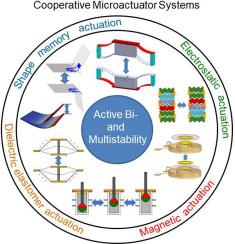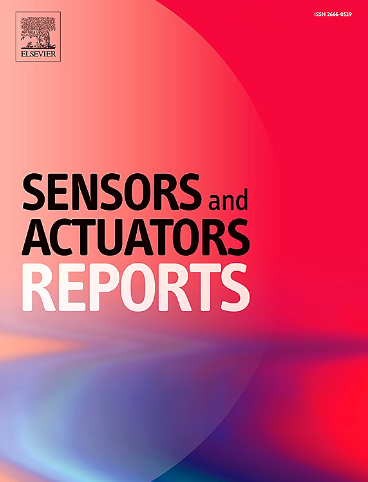Active bi- and multistability in cooperative microactuator systems
IF 7.6
Q1 BIOTECHNOLOGY & APPLIED MICROBIOLOGY
引用次数: 0
Abstract
The smart coupling of microactuators to cooperative microactuator systems enables new functionalities like active bi- and multistability requiring no external force for switching between stable states. This review explores different concepts of cooperative microactuator systems combining microactuation based on either the same or different transducer principles. The transducer principles comprise electrostatic, magnetic, dielectric elastomer and shape memory effects as well as combinations thereof. Thereby, active bi-/multistable switching is achieved via selective control of the microactuators using diverse control signals based on thermal, electrical or magnetic stimuli. The combination of the microactuators in confined space gives rise to various coupling effects and cross-sensitivities that need to be considered. In the following, the engineering aspects of material properties, microsystems design and fabrication, as well as experimental and numerical characterization of system performances and dependencies on design parameters will be discussed. The presented microactuator systems will be assessed with respect to their energy characteristics and critical forces for switching. Their application potential will be highlighted.

协同微执行器系统的主动双稳性和多稳性
微致动器与协同微致动器系统的智能耦合实现了主动双稳态和多稳态等新功能,在稳定状态之间切换不需要外力。本文探讨了基于相同或不同换能器原理结合微致动的协同微致动器系统的不同概念。换能器原理包括静电、磁性、介电弹性体和形状记忆效应及其组合。因此,主动双/多稳态开关是通过使用基于热、电或磁刺激的不同控制信号对微致动器的选择性控制来实现的。微执行器在密闭空间中的组合会产生各种耦合效应和交叉灵敏度,需要考虑。在下面,将讨论材料特性的工程方面,微系统设计和制造,以及系统性能的实验和数值表征以及对设计参数的依赖。所提出的微致动器系统将评估其能量特性和开关的临界力。突出其应用潜力。
本文章由计算机程序翻译,如有差异,请以英文原文为准。
求助全文
约1分钟内获得全文
求助全文
来源期刊

Sensors and Actuators Reports
Multiple-
CiteScore
9.60
自引率
0.00%
发文量
60
审稿时长
49 days
期刊介绍:
Sensors and Actuators Reports is a peer-reviewed open access journal launched out from the Sensors and Actuators journal family. Sensors and Actuators Reports is dedicated to publishing new and original works in the field of all type of sensors and actuators, including bio-, chemical-, physical-, and nano- sensors and actuators, which demonstrates significant progress beyond the current state of the art. The journal regularly publishes original research papers, reviews, and short communications.
For research papers and short communications, the journal aims to publish the new and original work supported by experimental results and as such purely theoretical works are not accepted.
 求助内容:
求助内容: 应助结果提醒方式:
应助结果提醒方式:


